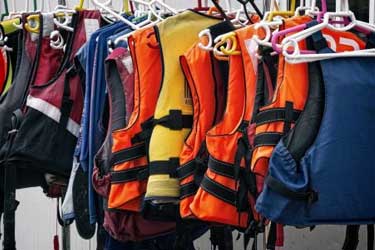I’m writing this in the summer so all these boat maintenance tips are selected for fair weather conditions.
Longer daylight hours and warmer temperatures mean more time in the day to varnish and for it to dry before the temperature drops.
Running rigging refers to all the equipment (ropes etc.) involved in raising, lowering and controlling the sails. By the middle of the summer, you’ll know what is working and what needs some attention. Check through your rigging for any failing splices, sheaves are running smoothly and any other adjustments that could be made to reduce friction and make sailing easier.
This is a pleasant afternoon job. Check all your sheaves are running smoothly, your winches are serviced and the windlass is working as it should. If you’ve ever been on a boat when deck gear fails you will understand how important a little regular maintenance is.
Each piece of equipment will have its own servicing list.
Standing rigging refers to the fixed lines, wires and rods which support masts and bowsprits. In extremely bad maintenance situations, the mast could come down! What is more likely though is the boat’s performance will be affected by the rigging requiring adjustments. A correctly rigged boat will be easier to steer and faster too.
A visual check of all the equipment is a great start. Stainless steel rigging rarely breaks in the middle, it’s at the ends where the wire is joined to the terminal at the deck via stainless steel swages where you are more likely to see strands of wire starting to break. Everything connected to the base of the wire should line up perfectly so that the load is transferred evenly. A bent wire is a sure sign that something is very wrong.
If you can get up the mast safely, check the spreaders are securely attached to the mast. Also, check for chafe or any other problems on the halyard or furling genoas and the boom topping lift. Check the halyard sheaves are running smoothly and apply silicon spray if necessary.
Common maintenance issues on the rigging are the rigging being too slack, especially the shrouds. You will often see boats sailing to windward with the lee shrouds slack. This creates several problems: the increased movement of the rigging causes early fatigue of the rigging. Boats rely on a degree of tension. A boat with a full set of sails going to windward in a moderate breeze should still have lee shrouds with a small amount of tension. Before you lower a rig remember to count the number of bottle screw turns so you can re-set the rig up. It’s easy to count the threads above and below the bottlescrew and then note them in the logbook for future reference.
Another common problem in older boats is the mast heel moving downwards which results in the rig losing some tension. The cause of this is normally the wooden core of the moulded mast plinth, where leaky deck fittings have allowed water into the timber. An obvious sign of this is where you see the mast plinth dipping. It’s quite a job to fix this. You need to take off the top layer of fibreglass and replace the timber with a block of hardwood and then replace the fibreglass and gel coat. As with many maintenance areas, it is a lot simpler and cheaper if you just avoid any water leaking through in the first place.

If you ever need the safety equipment, you are going to be extremely glad it is all in good working order. Of course, it is especially important if you are planning to do longer passages away from the shore. The usual maintenance needs are replacing lifebuoy lights, lifejackets with faulty inflation cylinders and old, unreliable fire extinguishers.
Whatever your experience, your type of boat or how often you go on the water there is a basic safety gear checklist which is relevant to all: